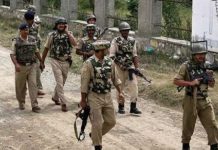
ON SEPTEMBER 7, 2009, lawyer Mukul Sinha ran to a news conference he had called at sundown in Ahmedabad, excitedly clutching a copy of a report a local judge had signed minutes ago. The 247-page report, handwritten by Metropolitan Magistrate SP Tamang, would grab headlines nationwide, sending shivers down the backs of the BJP government in Gujarat with its unprecedented claim – that the “encounter” of “Lashkar-e-Tayyeba terrorists”, Ishrat Jahan and three others, carried out early on the morning of June 15, 2004, in Ahmedabad, was the cold-blooded murder of innocent people.
“We hadn’t yet read the report, so we were as stunned as the journalists when we began reading it, translating from Gujarati,” says Sinha, still marvelling that a three-week probe revealed what he has been fighting to uncover for years. Of course, the next day, Gujarat High Court judge Kalpesh Jhaveri stayed Tamang’s report. He demanded to know why the magistrate had conducted a probe when Jhaveri was already hearing a petition by Shamima, Ishrat Jahan’s mother, who has sought an inquiry by the Central Bureau of Investigation (CBI) into the alleged encounter.
At the time of going to press, Shamima was readying to move against the stay. “We are filing a petition in the Supreme Court to pray that the stay on Tamang’s report be vacated,” Supreme Court lawyer Vrinda Grover, who represents Shamima, told TEHELKA.
The High Court’s stay certainly gave some political respite to the beleaguered Gujarat Chief Minister, Narendra Modi. This relief strengthened on September 14 when the BJP won the Gujarat Assembly by-election in five of the seven seats that polled days earlier. BJP leader Arun Jaitley quickly claimed that “siding with Ishrat Jahan” proved costly for arch-rival Congress party, which lost three seats it had won in the 2007 assembly elections. Ahmedabad-based political analyst Achyut Yagnik, however, dismisses the claim. “That’s propaganda. The BJP wants to prove that the Gujarati middle-class and the people are with them,” he told TEHELKA. “The fact is that the Congress lost this election because of overconfidence and the wrong selection of candidates rather than because the voters rallied for the BJP in view of any negative fallout of the Tamang report.”

Characteristically, Modi declared his party had won on the plank of development. Because he hadn’t campaigned in the by-election, he claimed his party was no longer dependent on him to draw the votes. But analysts say Modi is at his most vulnerable in his seven years as chief minister, due to his continuing and upcoming legal troubles.
These troubles have only added to the political damage to his standing after the BJP’s nationwide loss four months ago in the Lok Sabha elections, during which he was a star campaigner and projected as a future BJP prime ministerial aspirant. At the BJP’s botched brainstorming at Shimla last month, Modi had kept an unusually low profile, not the least because the Supreme Court had ordered that a Special Investigation Team (SIT) directly investigate his role in the 2002 massacre of Muslims in Gujarat during his tenure.

Photo: Trupti Patel
Tamang’s report set the proverbial cat among Modi and his clutch of loyalist police officers, several of whom have allegedly acted as his henchmen from the time the police actively connived in or stood by and allowed the Muslim killings. Retired IPS officer RB Sreekumar, who has relentlessly fought to expose Modi’s alleged complicity in the 2002 pogrom, says these police officers are now threatened by the likely exposure of their roles in fake encounters. Tamang has named 21 policemen, including top officers such as the then Ahmedabad police commissioner KR Kaushik (who later became Gujarat’s Director-General of Police) and the then Crime Branch Joint Police Commissioner PP Pandey, for conspiring to murder Ishrat Jahan and the three others. “Some cops Tamang has named have conveyed to Modi that they won’t keep quiet like Vanzara has,” a source said speaking on the promise that he won’t be identified. “They have threatened that if a court finds them guilty, they would not hesitate to say that killing innocent Muslims was a state policy.”
DG Vanzara, a former Deputy Inspector General of Gujarat Police, is in jail since 2007 after being accused of masterminding the killing of Muslim businessman Sohrabuddin and his wife in 2006 and passing them off as terrorists. A widely known Modi loyalist, Vanzara headed the Ahmedabad Crime Branch when most encounters were carried out. Tamang has named him for planning the Ishrat Jahan encounter.
While Tamang’s findings have been widely reported, little is known of the behind-the-scenes bid since June to scuttle any probe into the encounter. After Tamang’s report became public, Gujarat government spokesman Jaynarayan Vyas denounced the magistrate — which might well be contempt of court because Tamang is a judicial officer — and claimed the encounter was genuine. The government told the High Court it didn’t know who had ordered the Tamang probe.
 The truth is it was the Gujarat government that directed Ahmedabad’s Chief Metropolitan Magistrate (CMM), DM Patel, to speed up the magisterial inquiry. “A certain official in the Home Department made a phone call on August 12,” says a court official. “The same afternoon, CMM Patel assigned the inquiry to Tamang.” Patel promptly dispatched all the case documents, such as forensic reports and the FIR, to Tamang with the instruction to “immediately” complete the inquiry. (Patel was transferred out two days after the report hit the headlines.)
The truth is it was the Gujarat government that directed Ahmedabad’s Chief Metropolitan Magistrate (CMM), DM Patel, to speed up the magisterial inquiry. “A certain official in the Home Department made a phone call on August 12,” says a court official. “The same afternoon, CMM Patel assigned the inquiry to Tamang.” Patel promptly dispatched all the case documents, such as forensic reports and the FIR, to Tamang with the instruction to “immediately” complete the inquiry. (Patel was transferred out two days after the report hit the headlines.)
SO WHY did the Gujarat government seek a magisterial inquiry more than five years after the encounter? The answer lies in the trajectory of Shamima’s petition before the High Court, which came to life earlier this summer after languishing for nearly five years. On June 26, High Court judge Jhaveri ordered that the CBI be made a party in the case. This stunned the police officers behind the encounter who began pressuring Modi to scotch any CBI probe.
Arun Jaitley claimed that ‘siding with Ishrat Jahan’ proved costly for the Congress Party
At this point, two strategies were set into motion. One was to pressure the Union Home Ministry to tell the High Court that the encounter was genuine. The police officers involved reportedly contacted Rajendrakumar, a top official with the Intelligence Bureau (IB) based at New Delhi. He had been the Centre’s IB Joint-Director in Gujarat in 2004 when the encounter was carried out. (New Delhi-based rights activist Shabnam Hashmi says she had long ago communicated to the Centre that Rajendrakumar was close to Modi and Vanzara and played a key role in the fake encounters.)
|
THE TAMANG REPORT’S FINDINGS How a three-week inquiry blew open a five-year conspiracy about the death of Ishrat Jahan |
||||
| 1The exit wounds of bullets were larger than the entry wounds. This proves they were shot from a close range. Many entry wounds were also higher than the exit woundsFinding: Those killed were sitting when they were shot. The killers stood next to them when they fired the shots | 2Not one of the 70 bullets the police allegedly fired were found. Police said they shot at the car’s left side and burst a tyre, after which it hit the divider on the rightFinding: This is an obvious lie, because the car would have swerved left and not right if the left tyre was shot | 3The wounds were from an AK-56 rifle and a 9mm pistol, which police didn’t own. These guns were instead found on those killed. Forensic tests found no remains of “exploded ammunition” on the deadFinding: The police planted the same guns on the dead men with which they killed them | 4Only I-cards were found in their pockets. Why was Ishrat Jahan wearing her college I-Card around her neck at that hour? Not a single rupee was found on them. An unlocked briefcase with Rs 2 lakh was found in the bootFinding: The police planted the I-cards and cash after killing them | 5The post mortem at 3.40pm on June 15, 2004 found that rigor mortis had set in. The deaths had thus occurred 12 to 24 hours earlier, that is, before 3.40am. But the police gave 4am as the time of the encounterFinding: The police killed the four people elsewhere and brought them to the site |
It was on Rajendrakumar’s watch that the Central IB had sent a controversial “input” about possible terrorists of the Lashkar-e-Tayyeba coming into Gujarat to kill Modi. The Ahmedabad Crime Branch had cited this “input” to justify the encounter. Sources say Rajendrakumar now reached out to Union Home Minister P Chidambaram and “personally vouched” that the encounter was genuine. Chidambaram reportedly agreed that his ministry should file an affidavit in the High Court.

Meanwhile, things were moving fast at the High Court. On August 7, judge Jhaveri ruled that he would “explore the possibility of handing over the investigation to higher officer/s, that is, officer/s above the rank of Deputy Commissioner of Police, more particularly, from the cadre of Additional DG”. He adjourned this decision to the next hearing on August 12. Shortly, the Union Home Ministry filed an affidavit in Jhaveri’s court supporting the state’s claim on the encounter.
An aside to this affidavit. Sources say the Centre’s lawyer in Ahmedabad, Assistant Solicitor General PS Chapaneri, first refused to back the affidavit when a Union Home Ministry official, VS Mani, brought it. The reason? During an earlier hearing in the case, Chapaneri had verbally told the judge the Centre would be willing to hold a CBI probe. (Ever scared of being politically outmanoeuvered by Modi, the UPA government is in a characteristic flipflop over the question: which side does it stand on? Chidambaram last week said an intelligence input is “no license to kill”. This week, the Centre developed cold feet after deciding to appeal the Supreme Court against the stay on Tamang’s report.)
The second strategy was to hasten pending inquiries into the encounter. As it happened, a magisterial inquiry routinely begun in 2004 had never been completed. At that time, this inquiry was with an executive magistrate named Gaurav Prajapati, who was not a judicial officer. In 2006, following amendments to procedural law, the state government handed the inquiry to the judicial side. For three long years, this inquiry lay dormant, until the morning of August 12, the day Jhaveri was to rule on setting up a new probe.
The officers involved in the encounter began pressuring Modi to scotch any CBI probe
Jhaveri could take up the matter only on August 13, when he swiftly announced the setting up of a Special Investigation Team (SIT), consisting of three top police officers of Gujarat with the mandate “… to consider all the aspects from every angle, which are relevant for the purpose of finding out whether the incident was a genuine encounter or a fake one.” This SIT must file its report by November 30, the next date of hearing in the case.
It must be pointed out that the Gujarat government did not once denounce the formation of this SIT or insist that the Ishrat Jahan encounter was genuine, as it did after Tamang’s report came out. Is it because judge Jhaveri chose the police officers for the SIT from a list submitted by Advocate General KB Trivedi? Big question: if the Gujarat government believes that the encounter was genuine, then why hasn’t it approached the Supreme Court against the High Court order setting up the SIT?
Ihe UPA government is in a flip-flop over the Ishrat question: on which side does it stand?
(A month later, the SIT hasn’t started work because the Gujarat government is yet to issue relevant orders. The SIT includes at least one officer of dubious antecedent: Gujarat Police Inspector General JK Bhatt. Bhatt was one of the three officers whose investigation had claimed a conspiracy by Godhra’s Muslims to set the Sabarmati Express on fire on February 27, 2002. The theory stands discredited, including by a TEHELKA sting operation. Earlier this year, the Gujarat High Court ruled that the now lapsed Prevention of Terrorism Act was wrongly applied to about 100 Muslims charged for the train fire as no conspiracy had been established.)

NO DOUBT the SIT’s job is harder now. To find the encounter genuine it would have to trash Tamang’s report, which really makes the encounter an open-and-shut case, based on the forensic examinations.
“If there had been no Tamang report, the SIT could well have found the encounter genuine basing it entirely on the intelligence inputs,” says a lawyer connected with the case. “But now, the SITwill have to prove that the forensic discrepancies Tamang has exposed are wrong if it wants to find the encounter genuine.” But if the SIT upholds Tamang’s findings — that the 21 policemen conspired to kill Ishrat Jahan and three others in cold blood and falsely pass them off as terrorists — it could create a legal and political Frankenstein for Modi, for this would be the second encounter after the Sohrabuddin case to be questioned as genuine.
And that begs the question: Were “fake encounters” of Muslims a state policy under Modi? Retired IPS officer Sreekumar, who headed the state Intelligence Branch (State IB) during April-September 2002, claims that the then Director General of Police of Gujarat, K Chakravarty, called him up on May 1, 2002, and told him that the state government wanted such encounters to take place.
 “Chakravarty told me that [the then Gujarat Chief Secretary] Subba Rao had told him that some Muslims should be eliminated,” Sreekumar told TEHELKA in Gandhinagar. “I told Subba Rao that if there is an encounter, I will do an inquiry and speak out against my colleagues if I find the encounters are fake.” Sreekumar says he began documenting such daily conversations in a diary, which he has put away at a secure place. Sreekumar was shunted out in September 2002. The first encounter took place the next month. Over the next four years, the Crime Branch killed some 17 alleged terrorists. In most cases, the police claimed that the terrorists had sneaked in with the purpose to kill Modi, BJP leader LK Advani and Vishwa Hindu Parishad leader Praveen Togadia. Such encounters stopped after the arrest of Vanzara and several other police officers in the Sohrabuddin case.
“Chakravarty told me that [the then Gujarat Chief Secretary] Subba Rao had told him that some Muslims should be eliminated,” Sreekumar told TEHELKA in Gandhinagar. “I told Subba Rao that if there is an encounter, I will do an inquiry and speak out against my colleagues if I find the encounters are fake.” Sreekumar says he began documenting such daily conversations in a diary, which he has put away at a secure place. Sreekumar was shunted out in September 2002. The first encounter took place the next month. Over the next four years, the Crime Branch killed some 17 alleged terrorists. In most cases, the police claimed that the terrorists had sneaked in with the purpose to kill Modi, BJP leader LK Advani and Vishwa Hindu Parishad leader Praveen Togadia. Such encounters stopped after the arrest of Vanzara and several other police officers in the Sohrabuddin case.
Modi’s detractors have long admitted to his amazing political skills to overcome nearly all the legal troubles since the killings of Muslims, which made him India’s most controversial politician. But with the Supreme Court-appointed SIT set to investigate the chief minister’s role in the 2002 pogrom, and now the Tamang report calling the Ishrat Jahan encounter as fake, is it possible that the cat is about to use up its ninth life?
ajit@tehelka.com













